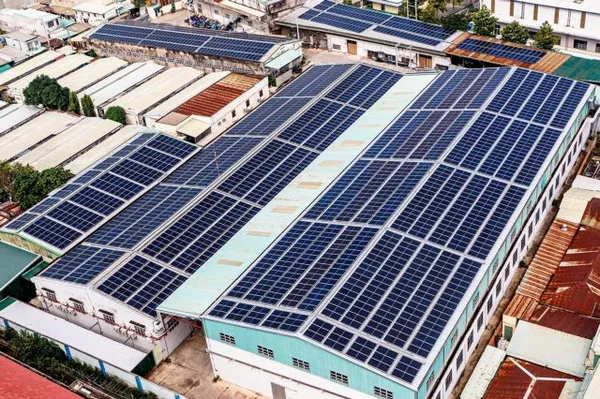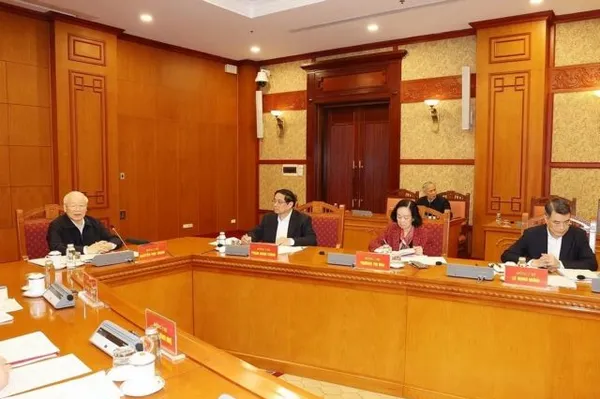 Economy
Economy

Increased growth, reduced spending and less debt guarantees are the solutions as rising public debt and its repayment exerts a lot of pressure on the Government, Đặng Đức Anh, a senior official with the Ministry of Planning and Investment, tells Vietnam News Ageny (VNA).
 |
| Đặng Đức Anh |
Increased growth, reduced spending and less debt guarantees are the solutions as rising public debt and its repayment exerts a lot of pressure on the Government, Đặng Đức Anh, a senior official with the Ministry of Planning and Investment, tells Vietnam News Ageny (VNA).
What is the status of Việt Nam’s public debt?
According to the Government, the value of Việt Nam’s public debt in 2016 will edge close to 65 per cent of the country’s gross domestic product (GDP) – the ceiling allowed by the National Assembly. The value of Government’s debt could be 53.1 per cent of the GDP, higher than the ceiling.
These numbers are estimated upon economic targets set by the Assembly and the Government at the beginning of the year. But macroeconomic results, on which the public debt is calculated, are lower than initial predictions. Therefore, unless the Government takes serious actions, this year’s public debt will surpass the ceiling level of 65 per cent.
Why has Việt Nam’s public debt kept increasing, rising by three times the annual GDP growth during 2011-2015?
Three broad reasons can be identified. Firstly, we know that all targets on budget income, budget expense and public debt are calculated on the GDP forecast. If the Government sticks to borrowing and spending based on the initial GDP growth, when it is lower than expected, public debt will grow at higher pace than actual GDP growth.
Secondly, the Government’s overspending rose in 2011-2015 as the gap between spending and income widened. Budget income in 2011-2015 declined in comparison to 2006-2010. The ratio of Government income over GDP was 21-22 per cent in 2011-2015, lower than the 26-27 per cent ratio during the previous five-year period. Reduction in Government spending did not match the reduction in income.
We can also see that in Việt Nam’s current budget spending structure that the portion of regular spending is becoming bigger while the Government’s income is only sufficient for regular spending and paying debts. Therefore, the Government needs to increase borrowings for socio-economic development, leading to a significant rise in public debt.
Besides, in order to maintain sufficient funding for socio-economic development, the Government has reversed its loans, which means the due date of the loans will be extended. When the Government implements loan reversion, previous loans and new ones will be accumulated and the total value of debt will increase.
The National Assembly has approved the national 2016-2020 five-year plan. The resolution states that annual public debt cannot exceed 65 per cent of the GDP, Government debt not exceed 54 per cent and overseas debt does not exceed 50 per cent of GDP. What can the Government do to meet these targets?
We need to focus on three solutions.
First, we need to implement more strongly the solutions stated in the National Assembly’s economic restructuring plan 2016-2020 to make sure the growth rate in this period is between 6.5 per cent and 7 per cent per year.
Secondly, we need to reduce Government overspending in the middle and long-term and reallocate the budget expenditures to increase spending for socio-economic development to 25-26 per cent. We also need to reduce regular spending, pay debts on schedule and reverse the loans less frequently.
Thirdly, we should reduce the issuing of Government-backed loans to local authorities and companies, and keep a close eye on borrowings made by local governments.
How can the market meet the Government’s borrowing demands and how can the Government manage its loans?
Besides considering its capacity for debt repayment, the Government needs to make loans at a reasonable pace in comparison with economic growth. The Government also needs to reduce its overspending, make sure the capital is used efficiently and heighten the responsibility of those who utilise the loans.
The finance ministry has tried to change its mechanisms from distributing official development assistance (ODA) to lending it to local governments. I think this is a good move to improving efficiency and the ministry should promote this solution in the near future.
Improving public debt management mechanisms has been considered a key solution. What should we prioritise or focus on?
We need to focus on policies, instruments and the structure in order to make sure public debt is managed comprehensively.
In the future, the Law of Public debt management should be re-assessed and amended to match international standards. Việt Nam also needs to develop its own ceiling level of public debt for each kind of debt, including Government debt, Government-backed loans and local government loans.
Another issue that needs attention is the restructuring the loan due-date, which will extend the due date and reduce repayment pressure on the Government. The Government also needs to consider lending to local authorities and companies instead of distributing the loans as is being done now.
Lastly, we need to re-structure the organisation and obligations of Government agencies so that the management of public debt is implemented by a transparent agency and others work together effectively. — VNS









